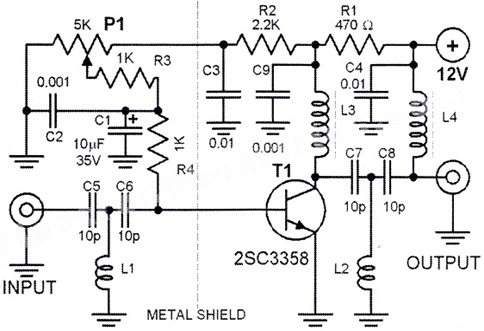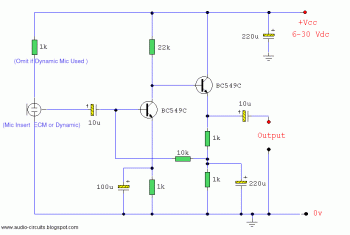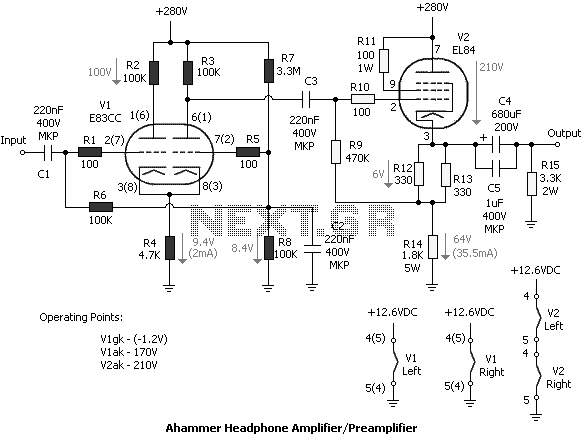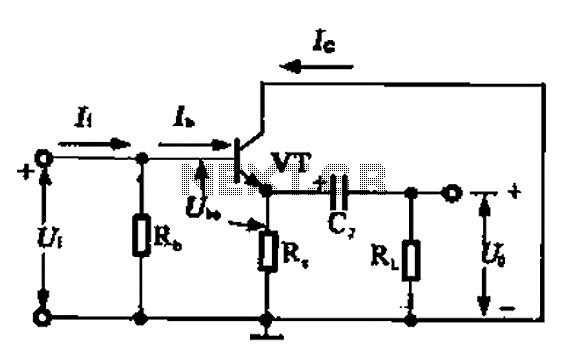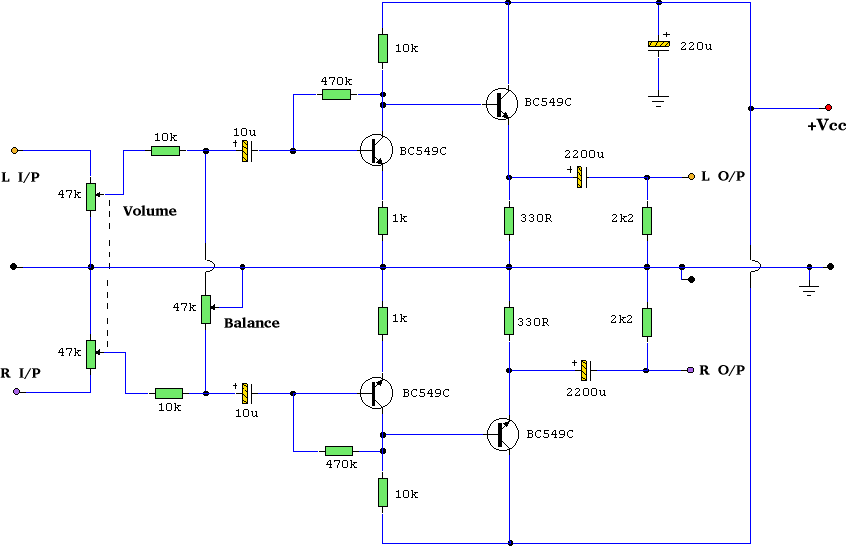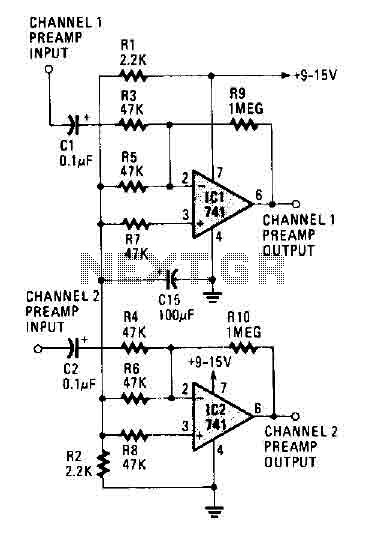
Turn A Compensated Current Sink Into A Common Emitter (CE) Amplifier
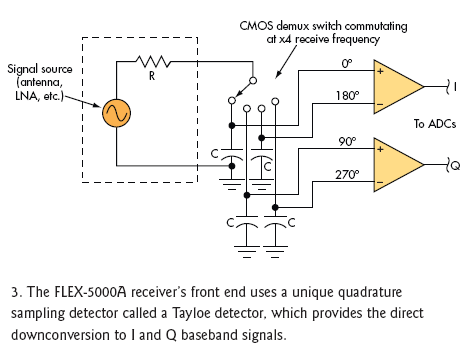
By adding only a few components, a temperature- and beta-compensated current sink can be converted into a common-emitter (CE) amplifier that maintains a stable biased operating point. This design concept will demonstrate the process.
To implement this design, the primary goal is to utilize a temperature- and beta-compensated current sink as the foundational element for the common-emitter amplifier configuration. The current sink will provide a stable biasing condition essential for the proper operation of the CE amplifier.
The circuit typically consists of a bipolar junction transistor (BJT) configured in the common-emitter arrangement. This configuration allows for voltage amplification while ensuring that the operating point remains stable across varying temperatures and transistor beta (β) values.
Key components involved in this design include:
1. **Transistor**: A BJT is selected based on the desired gain and frequency response. The emitter resistor is crucial for thermal stability and biasing.
2. **Current Sink**: The current sink is designed to provide a constant current to the base of the transistor. This can be achieved using a simple resistor-capacitor (RC) network or more advanced configurations such as Wilson current mirrors or Widlar current sources.
3. **Biasing Resistors**: Resistors are employed to set the base bias voltage, ensuring that the transistor operates in the active region. These resistors also help in stabilizing the operating point against variations in temperature and beta.
4. **Coupling Capacitors**: To prevent DC bias from affecting subsequent stages, coupling capacitors are used to connect the amplifier to other circuit stages while allowing AC signals to pass through.
5. **Bypass Capacitor**: A bypass capacitor may be added across the emitter resistor to enhance gain at higher frequencies by reducing the effect of the emitter resistor on AC signals.
The overall design emphasizes simplicity and efficiency, allowing for easy integration into various applications requiring stable amplification. By carefully selecting component values and configurations, the amplifier can achieve desired performance metrics, including gain, bandwidth, and linearity, while maintaining robustness against environmental variations.By adding only a few components, you can turn a temperature- and beta-compensated current sink into a common-emitter (CE) amplifier that maintains a stable biased operating point. This Idea for Design will show you how 🔗 External reference
To implement this design, the primary goal is to utilize a temperature- and beta-compensated current sink as the foundational element for the common-emitter amplifier configuration. The current sink will provide a stable biasing condition essential for the proper operation of the CE amplifier.
The circuit typically consists of a bipolar junction transistor (BJT) configured in the common-emitter arrangement. This configuration allows for voltage amplification while ensuring that the operating point remains stable across varying temperatures and transistor beta (β) values.
Key components involved in this design include:
1. **Transistor**: A BJT is selected based on the desired gain and frequency response. The emitter resistor is crucial for thermal stability and biasing.
2. **Current Sink**: The current sink is designed to provide a constant current to the base of the transistor. This can be achieved using a simple resistor-capacitor (RC) network or more advanced configurations such as Wilson current mirrors or Widlar current sources.
3. **Biasing Resistors**: Resistors are employed to set the base bias voltage, ensuring that the transistor operates in the active region. These resistors also help in stabilizing the operating point against variations in temperature and beta.
4. **Coupling Capacitors**: To prevent DC bias from affecting subsequent stages, coupling capacitors are used to connect the amplifier to other circuit stages while allowing AC signals to pass through.
5. **Bypass Capacitor**: A bypass capacitor may be added across the emitter resistor to enhance gain at higher frequencies by reducing the effect of the emitter resistor on AC signals.
The overall design emphasizes simplicity and efficiency, allowing for easy integration into various applications requiring stable amplification. By carefully selecting component values and configurations, the amplifier can achieve desired performance metrics, including gain, bandwidth, and linearity, while maintaining robustness against environmental variations.By adding only a few components, you can turn a temperature- and beta-compensated current sink into a common-emitter (CE) amplifier that maintains a stable biased operating point. This Idea for Design will show you how 🔗 External reference
